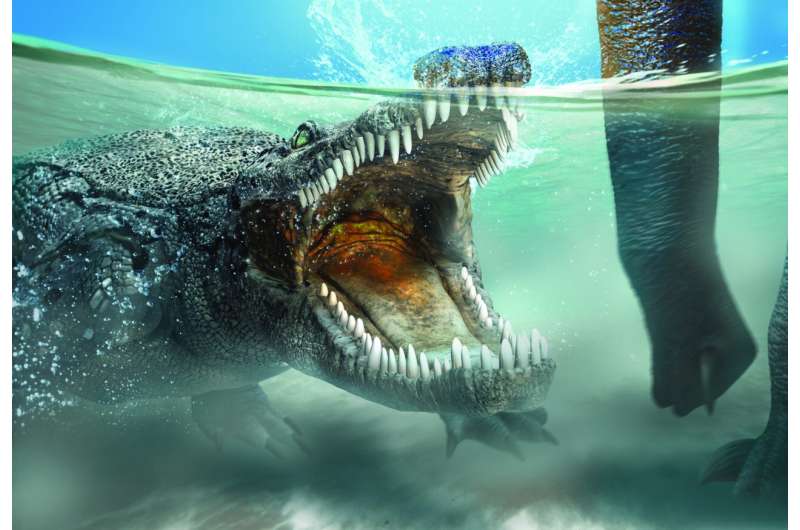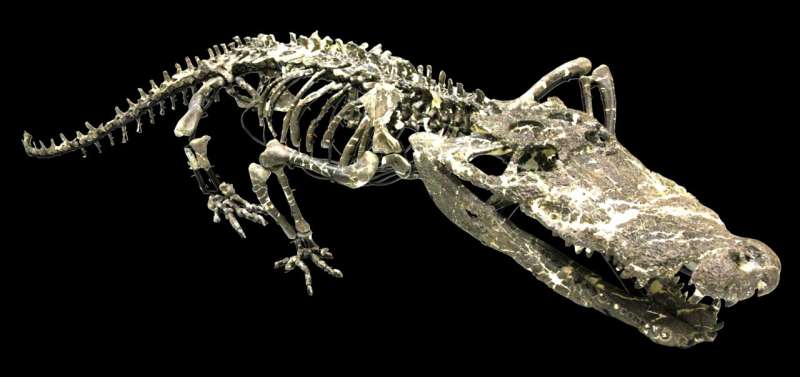Amphicotylus milesi. Credit: illustration by Masato Hattori, The Royal Society, used with permission
A team of researchers from Hokkaido University and the Gunma Museum of Natural History, both in Japan and Carleton University in Canada, has found evidence of anatomical parts in an ancient relative of the crocodile that allowed it to continue breathing as prey held in its mouth drowned. In their paper published in the journal Royal Society Open Science, the group describes their study of the anatomy of an Amphicotylus milesi fossil found in Wyoming in 1993.
Prior research had shown that the A. milesi fossil represented a new species, one that belonged to an early group of crocodile relatives known as goniopholidids. They all lived in parts of the Northern Hemisphere during the Jurassic period and into the Cretaceous. They all also had bodies that suggested they were long, short-legged marine creatures. The A. milesi fossil turned out to be the most complete goniopholidid skeleton ever uncovered. It measures approximately 2.3 meters in length and the creature would have weighed approximately 227 kilograms when alive. In this new effort, the researchers took a closer look at its head and throat anatomy.
Modern crocodiles have nostrils turned in reverse to most other animals, situated atop their snout. They are used for breathing when the crocodile is in the water. They also have a palatal valve in their throat that can be used to allow the croc to breathe through its mouth when on shore. On land, the valve is open. Once in the water, the valve closes, keeping water in the mouth from entering the lungs. The researchers were not able to see a palatal valve, of course; its fleshy makeup was lost long ago. But they did find skull features similar to a modern crocodile and a structure in the roof of its mouth that appeared similar to that in modern crocs. They also found a short bone that in modern crocs supports the tongue. Taken together, the researchers suggest the evidence is strong for a palatal valve. The finding could help to explain how goniopholidid's survived the mass extinction that wiped out the dinosaurs—they were able to stay in the water, even while feeding.
New Goniopholidid. Credit: Gunma Museum of Natural History, The Royal Society, used with permission
More information: Junki Yoshida et al, A new goniopholidid from the Upper Jurassic Morrison Formation, USA: novel insight into aquatic adaptation toward modern crocodylians, Royal Society Open Science (2021). DOI: 10.1098/rsos.210320
Journal information: Royal Society Open Science
© 2021 Science X Network

























